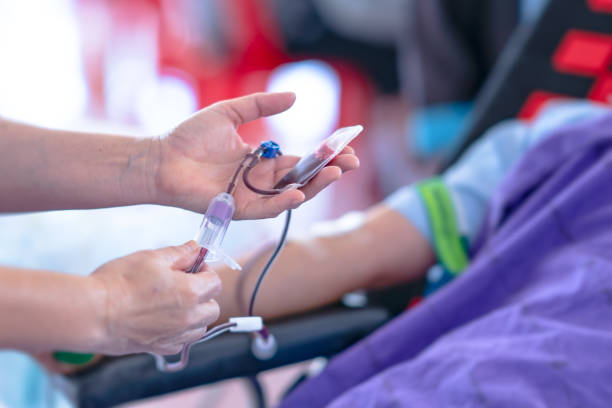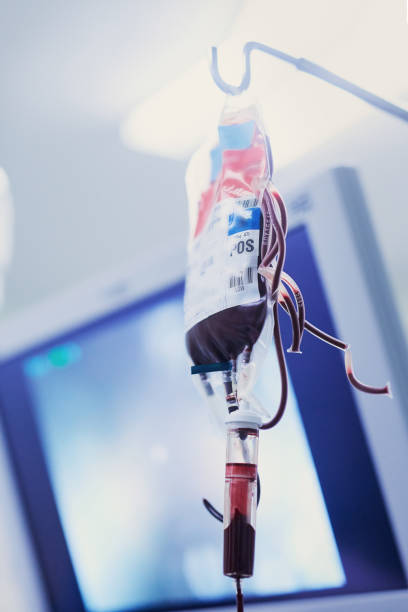The Importance of Blood Donation
Blood donation is a critical component of healthcare systems worldwide. Every day, countless individuals depend on the generosity of blood donors to receive life-saving transfusions. Whether for surgeries, cancer treatments, chronic illnesses, or trauma care, donated blood can mean the difference between life and death. Understanding how often you can donate blood is essential for maintaining your health while contributing to this vital cause.
General Guidelines for Blood Donation Frequency
The frequency with which one can donate blood varies based on the type of donation and the donor's health and eligibility. Generally, the most common type of donation is whole blood donation. The standard waiting period between whole blood donations is typically 56 days, or eight weeks. This interval allows the donor's body enough time to replenish the lost blood and ensures that donating does not adversely affect their health.
Types of Blood Donations and Their Frequencies
Apart from whole blood donations, there are other types of blood donations, each with its specific guidelines regarding donation frequency:
1. Platelet Donation: Platelets are a critical component of blood that help in clotting. Platelet donation, or apheresis, involves extracting platelets from the donor's blood and returning the rest of the blood components back to the donor. Platelet donations can be made more frequently than whole blood donations, often up to 24 times a year, with a typical interval of seven days between donations.
2. Plasma Donation: Plasma, the liquid part of the blood, is used for various medical treatments, including those for burn victims and patients with clotting disorders. Donors can give plasma every 28 days, or up to 13 times a year. This frequency is higher than whole blood donation but still requires a recovery period to ensure donor safety.
3. Double Red Cell Donation: In a double red cell donation, also known as apheresis red blood cell donation, donors give twice the amount of red blood cells compared to a whole blood donation. This type of donation is less frequent, with a recommended interval of 112 days, or 16 weeks, between donations. The extended interval accounts for the larger volume of red blood cells removed.
Factors Influencing Donation Frequency
Several factors can influence how often an individual can donate blood. These include the donor's overall health, age, weight, and hemoglobin levels. It is crucial for donors to meet specific criteria to ensure their safety and the safety of the recipients.
Health: Donors must be in good health at the time of donation. This means being free from any infections, chronic illnesses, or conditions that could be exacerbated by donating blood.
Age: Most blood donation organizations require donors to be at least 17 years old (16 in some areas with parental consent) and there is no upper age limit as long as the donor is healthy. Older donors may need to undergo additional health screenings.
Weight: Donors typically need to weigh at least 110 pounds (50 kilograms). This ensures that the donor has sufficient blood volume to safely donate without adverse effects.
Hemoglobin Levels: Hemoglobin is a protein in red blood cells that carries oxygen. Donors must have adequate hemoglobin levels to ensure they do not become anemic after donating. The minimum hemoglobin level for donation is usually 12.5 g/dL for women and 13.0 g/dL for men.
The Donation Process
Understanding the blood donation process can help alleviate any concerns potential donors might have. The process is straightforward and generally consists of four main steps:
1. Registration: Donors provide their identification and fill out a health history questionnaire. This information helps determine eligibility and ensures the safety of both the donor and the recipient.
2. Health Screening: A brief physical exam is conducted to check the donor's pulse, blood pressure, temperature, and hemoglobin levels. This step ensures that the donor is in good health and can safely donate blood.
3. Donation: The actual donation process takes about 8-10 minutes for whole blood donations. For apheresis donations, such as platelets or plasma, the process can take longer, usually between 60 to 120 minutes. During the donation, the donor is comfortably seated, and a sterile needle is used to draw blood.
4. Recovery: After donating, donors are provided with refreshments and encouraged to rest for a short period. This helps prevent dizziness or fainting. It is also essential for donors to stay hydrated and avoid strenuous activities for the remainder of the day.
Benefits of Donating Blood
Blood donation is not only beneficial to recipients but also offers several advantages to donors. These benefits include:
1. Health Monitoring: Each donation includes a mini-physical, where vital signs and hemoglobin levels are checked. This can help identify potential health issues early on.
2. Reduced Risk of Certain Health Conditions: Regular blood donation has been linked to a lower risk of heart disease and certain cancers. Donating blood helps reduce iron levels in the body, which, when excessive, can contribute to these conditions.
3. Psychological Benefits: Knowing that your donation can save lives provides a significant sense of accomplishment and satisfaction. It fosters a sense of community and altruism, contributing to overall well-being.
Common Myths and Misconceptions
Despite the importance of blood donation, various myths and misconceptions can deter potential donors. Addressing these can help encourage more people to donate:
Myth 1: Donating Blood is Painful: While the needle prick may cause minor discomfort, the process is generally not painful. Most donors report feeling only a slight pinch.
Myth 2: You Can Contract Diseases from Donating Blood: Blood donation is a sterile process, and all equipment used is new, sterile, and used only once. There is no risk of contracting diseases from donating blood.
Myth 3: Blood Donation Weakens Your Immune System: Donating blood does not weaken the immune system. The body quickly replenishes the donated blood, and overall health remains unaffected.
Myth 4: Only Certain Blood Types are Needed: All blood types are needed and valuable. Blood donation organizations strive to maintain a diverse blood supply to meet various needs.
Preparing for Blood Donation
Proper preparation can make the blood donation experience more comfortable and effective. Here are some tips for prospective donors:
Stay Hydrated: Drinking plenty of water before and after donation helps maintain blood volume and prevents dizziness.
Eat a Healthy Meal: Consuming a balanced meal rich in iron and low in fat before donating ensures that hemoglobin levels are adequate and that blood can be easily processed.
Rest Well: Getting a good night's sleep before donating helps ensure that the body is well-rested and ready for the donation process.
Wear Comfortable Clothing: Wearing clothing with sleeves that can be easily rolled up allows for smooth access to veins during the donation.
Post-Donation Care
After donating blood, taking care of oneself is crucial for a swift recovery. Here are some post-donation tips:
Rest and Hydrate: Continue to drink fluids and avoid strenuous activities for at least 24 hours after donating.
Monitor for Any Adverse Effects: While most donors experience no issues, some may feel lightheaded or experience bruising at the needle site. If any severe reactions occur, contact the blood donation center or seek medical attention.
Schedule the Next Donation: If eligible, plan the next donation. Regular donations are vital for maintaining a steady blood supply.
The Lifesaving Impact of Blood Donation
The impact of blood donation cannot be overstated. Every donation has the potential to save up to three lives, as the donated blood can be separated into different components—red blood cells, plasma, and platelets—each serving different medical needs. By donating blood, individuals directly contribute to the well-being and survival of patients in need.
Encouraging Others to Donate
Sharing personal experiences and encouraging others to donate can help increase the number of donors. Community drives, workplace donation campaigns, and educational programs can raise awareness and motivate more people to participate in this life-saving act.
Blood Donation During Emergencies
During emergencies or natural disasters, the need for blood donations often surges. Blood donation centers may issue urgent appeals to meet the increased demand. Being a regular donor ensures a steady supply and readiness to respond to such crises.
Conclusion
Blood donation is a simple yet profoundly impactful act of generosity. Understanding how often you can donate, the different types of donations, and the preparation and care involved helps ensure a positive donation experience. By donating blood, you play a crucial role in saving lives and supporting the healthcare system. Encourage others to join in this noble cause, and together, we can make a significant difference in countless lives.




